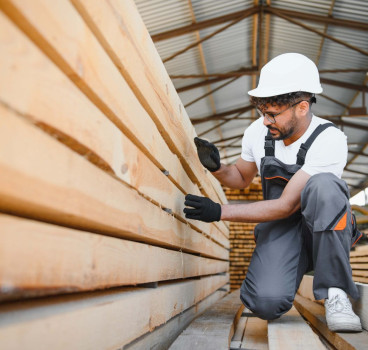Overheating - the hot home issue
In our quest to meet greater energy efficiency in homes through better insulation, thermal glazing and efficient heating systems, properties might be able to prevent heat losses in the winter, but remain at risk of overheating in the warmer months. As we rise to the challenge of making our homes more resilient to the extremes of winter, Michael Brogden, Director at Darren Evans Assessments looks into the issue of overheating, an issue that needs to be tackled head-on.
The issue of overheating is a complex one and not simply a case of airtightness or simple measures adopted to increase the efficiency of the building fabric. Overheating occurs when heat builds up in a home due to external forces such as the sun, or from internal sources such as appliances and hot water pipes. Throw into the mix the increases in the number of unusually hot summers as our climate changes, more frequent and intense heatwaves and urban high-density construction, and you begin to have alarming levels of overheating in homes and a potential health issue.
In the past, heat has been lost from buildings due to lower levels of insulation and gaps in the building fabric. These previous leaks would have dissipated the heat gain from south facing windows for example, but now, our well-intentioned improvements to a building's efficiency in winter means that heat cannot not escape, causing issues in the summer.
The bigger picture
The 2015 report by the Zero Carbon Hub, ‘Overheating in Homes – The Big Picture',
highlighted five key risk factors for overheating in homes, only one of which directly concerns the building fabric. This shows the need for a greater focus on wider design issues beyond the building itself particularly when planning new schemes. These factors are:
- Site context (e.g. air quality issues may prevent occupants from opening windows)
- External temperature (warm external air may not provide enough of a cooling effect)
- Solar gain (unshaded double-glazed windows can lead to high heat gain)
- Internal gain (electrical appliances, building services and activities such as cooking all contribute to heat gain)
- Building design (Building Regulations require increased levels of insulation and airtightness, meaning built-up heat will have to be removed)
It is easier with new build schemes to address these design factors than with existing buildings that may have constraints which are hard to alter. For example, opening windows may be restricted in apartment buildings such as where they open over bins, or tenants may have south facing windows or even windows which they cannot open. The only approach which is likely to be practical in addressing overheating is a combination of sensible design interventions taking on board what is practical for people to do.
There are further challenges in urban settings in summer, for example, in high density housing in cities like London opening windows may even cause hotter air to enter due to waste heat from cars, air conditioning and other sources. This wide range of issues is proof the issue of overheating is not as simple as people think.
Comfortably cool
By considering a range offactors, it's possible to tackle the issue of overheating. Housing developments should adopt a five-step ‘cooling hierarchy' as outlined in the London Plan to avoid the risk of overheating. This should include the minimisation of internal heat generation through energy efficient design such as decreasing pipe lengths and adopting pipe configurations that minimise heat loss, and reducing the amount of heat entering a building in summer by the use of shading measures including louvers, blinds or trees and vegetation. Increasing the amount of exposed thermal mass can also help to absorb excess heat with a building. In addition, both passive ventilation (openable windows, dual aspect units etc) and mechanical ventilation can be used to make free use of free cooling.
CIBSE's introduction of TM59: Design methodology for the assessment of overheating risk in homes, is another step in the right direction for the building services industry in terms of future proofing buildings to rising global temperatures. It can be used at the planning stage and later to assess overheating risk and influence building design for the better.
In reality, a well-insulated building can make it easier for occupants to maintain a comfortable temperature whatever the season, but only if that shell is well designed in the context of its site, and properly constructed to include an appropriate ventilation strategy. Whether new build or retrofit, it's important the construction industry provides homes that are warm in winter and cool in summer. Visit: http://www.darren-evans.co.uk/
Additional Blogs

What if Building Control went fully digital?
Building control governs structural integrity, fire protection, energy efficiency, accessibility and countless other aspects of design and construction. Historically, this process has been highly...
Read moreWhere most “Smart Buildings” go wrong
Smart buildings are often presented as the ultimate in modern construction - interconnected, efficient, intuitive and driven by real-time data. They promise lower operating costs, reduced energy use,...
Read more

The future of facilities management starts at RIBA Stage 0
Facilities management has traditionally been treated as a discipline that only becomes relevant once a building is handed over. At that point, FM professionals inherit decisions made months or years...
Read more